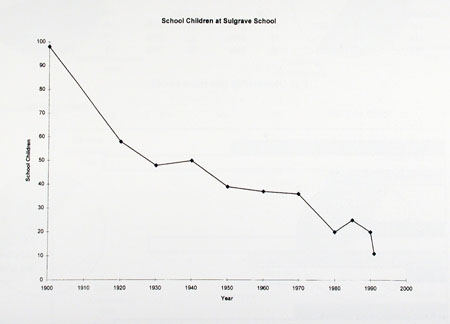
CHILDREN AT SULGRAVE SCHOOL
(Back to Chapter 5 Index)
The decline in the number of children attending Sulgrave School reflects educational, demographical and sociological changes. At the beginning of the century the school was an 'all-age' one giving an elementary education to all the local children between the ages of 5 to 15. The falling numbers between 1900 and 1940 reflected the general trend, already outlined, of rural-urban migration. Also it reflects the falling birth rate, which was significant during and after the First World War (1914-18) and the depression years of the 1930s.

After the Second World War (1939-45), the consequences of the 1944 Butler Act meant that Sulgrave School became a Primary School serving the local children between the ages of 5 to 11. This once again led to an overall decrease in the number of children attending Sulgrave School. Numbers remained constant until the 1970s when Sulgrave experienced the first influx of retired couples, thus reducing the percentage of children in the village. The 1980s show the arrival of the commuter family, bringing more children to Sulgrave but these children were often of secondary age thus not helping to increase the numbers attending the local primary school. Very often too, these families were in the socio-economic bracket that preferred private education to state education and thus even if their children were of primary school age they were not sent to the local school. Indeed when the school closed in 1991 there were more than enough children in the village to have kept it open, but only 11 were enrolled at Sulgrave School, leaving the local authority with little choice.